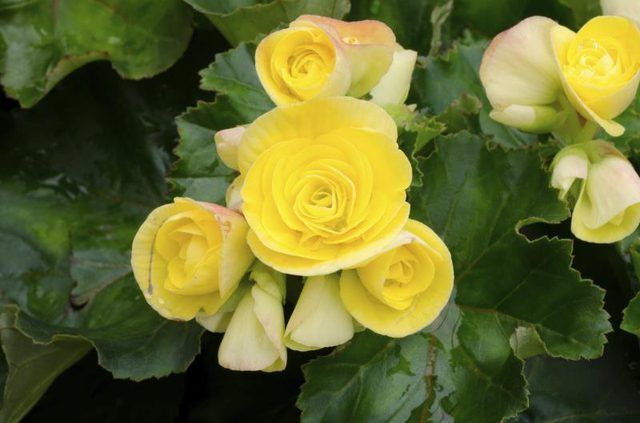Bulbs
Flower Basics
Flower Beds & Specialty Gardens
Flower Garden
Garden Furniture
Garden Gnomes
Garden Seeds
Garden Sheds
Garden Statues
Garden Tools & Supplies
Gardening Basics
Green & Organic
Groundcovers & Vines
Growing Annuals
Growing Basil
Growing Beans
Growing Berries
Growing Blueberries
Growing Cactus
Growing Corn
Growing Cotton
Growing Edibles
Growing Flowers
Growing Garlic
Growing Grapes
Growing Grass
Growing Herbs
Growing Jasmine
Growing Mint
Growing Mushrooms
Orchids
Growing Peanuts
Growing Perennials
Growing Plants
Growing Rosemary
Growing Roses
Growing Strawberries
Growing Sunflowers
Growing Thyme
Growing Tomatoes
Growing Tulips
Growing Vegetables
Herb Basics
Herb Garden
Indoor Growing
Landscaping Basics
Landscaping Patios
Landscaping Plants
Landscaping Shrubs
Landscaping Trees
Landscaping Walks & Pathways
Lawn Basics
Lawn Maintenance
Lawn Mowers
Lawn Ornaments
Lawn Planting
Lawn Tools
Outdoor Growing
Overall Landscape Planning
Pests, Weeds & Problems
Plant Basics
Rock Garden
Rose Garden
Shrubs
Soil
Specialty Gardens
Trees
Vegetable Garden
Yard Maintenance
Are Begonias Perennials?
Are Begonias Perennials?. Begonias (*Begonia spp.*) make up a large group of varied plants that come in many types, most with showy, colorful flowers, although some are grown for their vividly colored, interesting leaves. Most begonias are frost-tender plants that are grown as annuals in cold-winter areas, but they can also grow as perennials in...

Begonias (Begonia spp.) make up a large group of varied plants that come in many types, most with showy, colorful flowers, although some are grown for their vividly colored, interesting leaves. Most begonias are frost-tender plants that are grown as annuals in cold-winter areas, but they can also grow as perennials in warmer regions, coming back every spring. One type of begonia is a tough, hardy perennial that grows best in regions with sub-freezing winter temperatures, surviving outdoors to grow again in the spring.
In Warm-Winter Areas
Many begonias grow as herbaceous perennials -- dying back to the ground in winter-- in areas with warm winters. For example, the rex begonia (Begonia rex-cultorum), which is mostly grown for its colorful leaves, the wax begonia (Begonia x semperflorens-cultorum) and the dragon wings begonia (Begonia x argenteoguttata "Dragon Wings") grow year-round in U.S. Department of Agriculture plant hardiness zones 10 through 11, where frost rarely occurs in winter. Tuberous begonias (Begonia x tuberhybrida*) are a bit more hardy, growing in USDA zones 9 through 11.
If you live in these warmer zones and grow begonias in the ground, mulching the plants in early fall helps keep roots warm and prevents damage from an unusual cold spell. Add 2 or 3 inches of organic mulch under each plant, covering the planted area to warm the soil.
For Cold Regions
One type of begonia, commonly called the hardy begonia (Begonia grandis subsp. evansiana), is especially well-suited to areas with cold winters. It grows as an herbaceous perennial in USDA plant zones 6 through 9 and becomes dormant in winter, re-growing from its fleshy roots when warm weather returns in spring.
Mulching hardy begonias can be helpful because it prevents heaving of the plants out of the ground during freeze-thaw cycles, a problem that can expose roots to damage from cold air. Delay mulching until the ground has frozen, but before coldest temperatures arrive. Use hay, straw or pine boughs, because these won't compact under snow or ice.
Over-Wintering Indoors
If you live where winters are cold, you can grow frost-tender begonias as annuals, letting them die naturally when cold weather arrives. Or you can keep these begonias growing indoors during winter, ready to go back into the garden in the spring. Choose healthy, insect- and disease-free plants, examining each one carefully, then dig up each plant and place it in a clean pot with a drain hole, adding potting soil as needed. Move plants into bright filtered light, such as near a lightly curtained south- or west-facing window. Avoid full sun, which can burn leaves, and expect a few leaves to drop as the plant adjusts.
To counteract dry indoor air, raise the humidity in the plant's area by placing the pot on a water-filled saucer containing pebbles, but keep the water level just below the pebble tops. Misting the plant every day or two also helps increase humidity.
A Special Case
Tuberous begonias, named for their thick, fleshy roots -- called tubers -- have extra-showy flowers with waxy petals in many colors. Unlike other frost-tender begonias, they require a period of winter dormancy and, if you experience frost in winter, must be dug up and stored indoors until spring.
Wait until you see the plant's top start to turn yellow and die back, then let the soil dry out. Remove the dormant tuber from the soil, digging gently at the point where old stems met the ground. Clean the dry soil off the tubers, label them with a paper tag to record the variety, and store them in a cool, dry indoor spot, covering them in dry medium such as vermiculite. In spring, when frost danger has passed, re-plant each tuber in the garden, keeping its upper surface at the same level as the top of the soil.